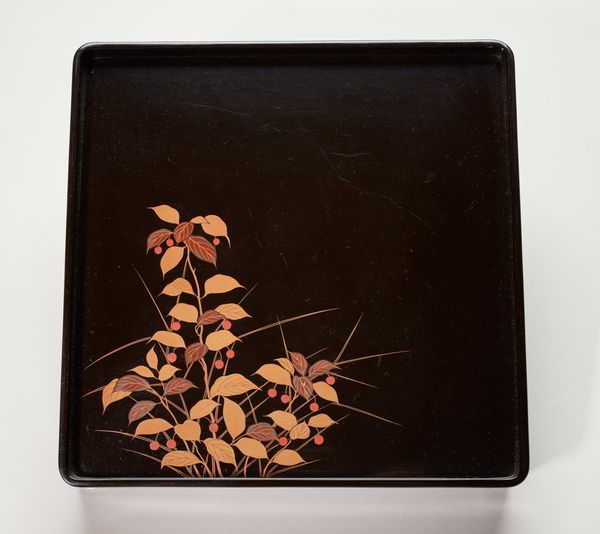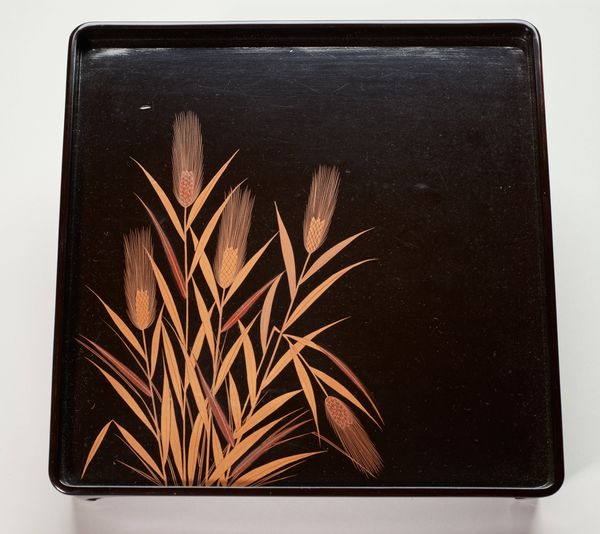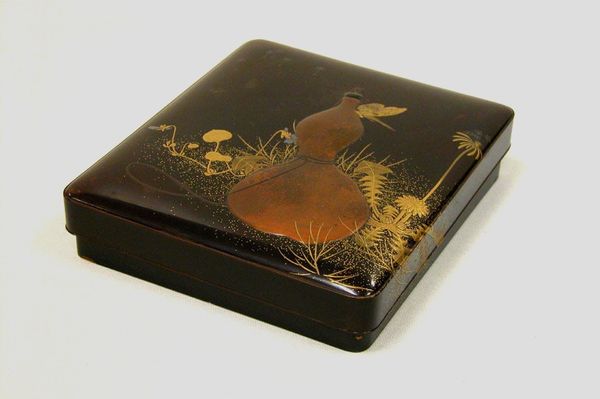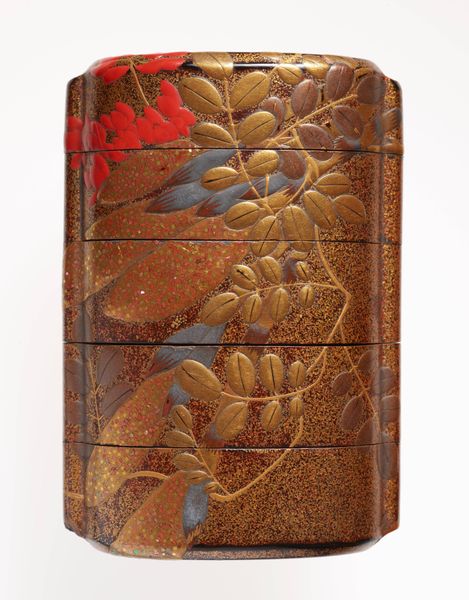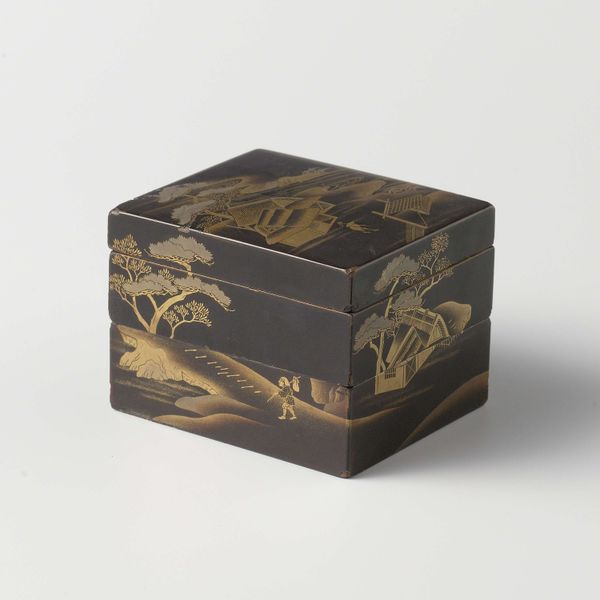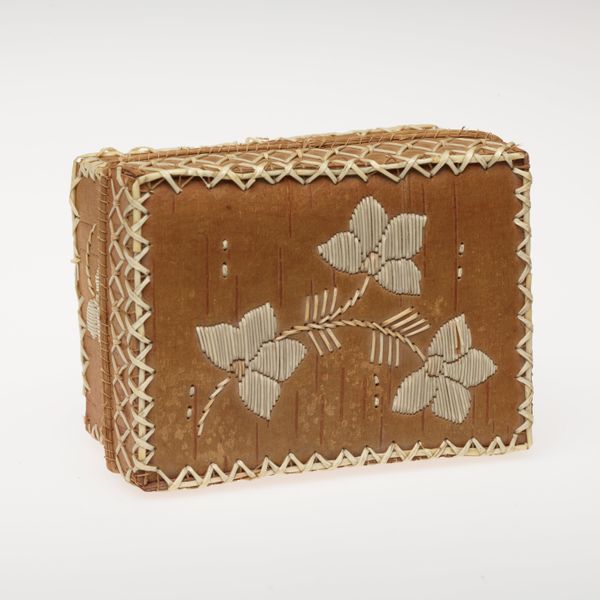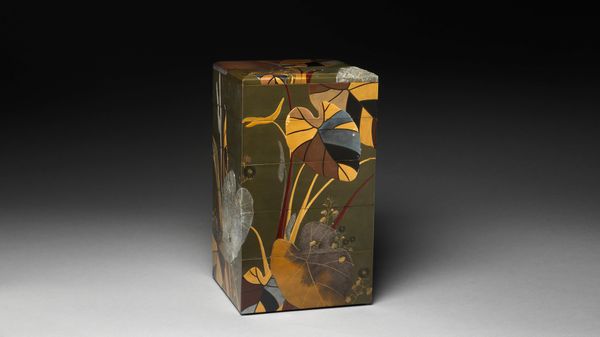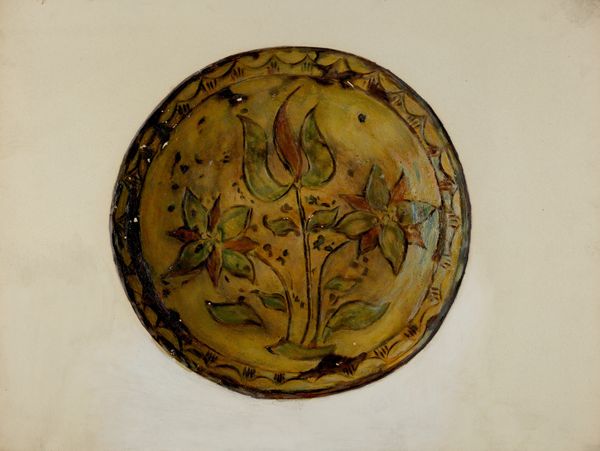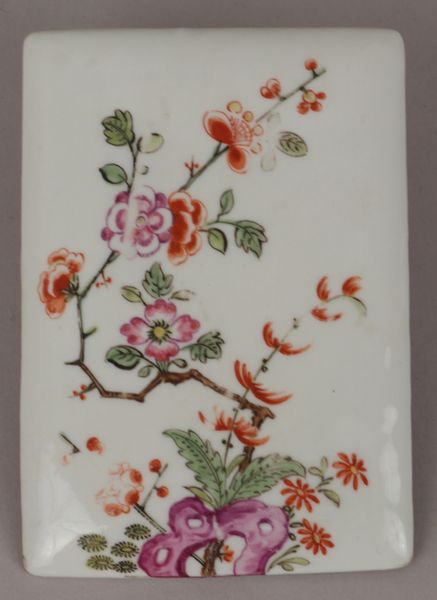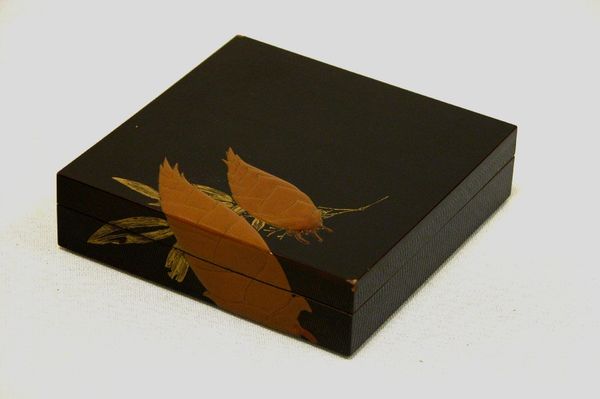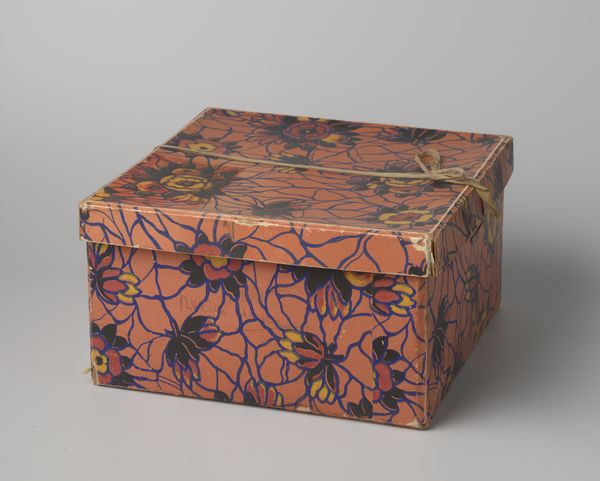
Small Serving Tray with Maiden Flower Design c. late 18th century
0:00
0:00
wood
#
asian-art
#
japan
#
wood
#
decorative-art
#
decorative art
Dimensions: 2 3/8 × 10 11/16 × 10 3/4 in. (6.03 × 27.15 × 27.31 cm)
Copyright: Public Domain
Curator: Here we have a Japanese Small Serving Tray with Maiden Flower Design, made around the late 18th century and attributed to Yamamoto Shunshō VI. Editor: It's quite small, almost jewel-like in its details. The dark lacquer really makes the floral design pop, though I wonder how that limited palette was received? Curator: Such trays were quite popular at the time in Japan, showcasing both craftsmanship and taste, primarily used within affluent households during tea ceremonies or for serving sweets to guests. These pieces helped to establish hierarchies of status and belonging, allowing families to visibly display wealth through specialized luxury commodities. Editor: I'm fascinated by the tension created by that asymmetrically placed design. It fights against the rigidity of the square tray and introduces some very elegant curvature into a limited plane. Do you have any idea which manufacturing methods might have been deployed? Curator: Well, while precise methods are lost to time, experts believe craftsmen employed refined carving and lacquering techniques. Decoration, as with this particular piece, also featured innovative designs made possible through complex techniques to display refined tastes aligned with current modes. Editor: Indeed! It's not a painting but its planar arrangement reminds one of Hokusai! I am further struck by its ability to subtly communicate both an artist’s expertise with its chosen medium alongside something visually attractive which would no doubt catch any observer's eye in antiquity even when serving a routine everyday function like snacks or tea! Curator: Exactly, the choice of specific design would convey a degree of the owner’s cultivation alongside status: from this we might gleam some fascinating data which enables one both individually and perhaps collectively better understand the artwork's sociocultural background! Editor: After taking another glance, the minimalist layout certainly generates harmony from an almost barren framework. How lovely! Curator: A piece such as this serving tray presents opportunities to interpret society through tangible examples—offering key material records of past artistic achievement! I enjoyed delving into these specific socio-cultural insights regarding craftsmanship’s wider symbolic scope here!
Comments
minneapolisinstituteofart almost 2 years ago
⋮
Originally from a set of ten, the five trays on display here show a variety of plant motifs associated with the seasons, and executed in hiramaki-e (low sprinkled picture) with gold and pigmented powders. The bottom of one of the trays bears the seal “Shunshō,” for the family of lacquer artisans. The Shunshō school was established by Yamamoto Shunshō (1610–1682) and continued on until the end of the 19th century. Shunshō I was well known for his mastery of the togidashi-e (polished out picture) technique, which is used on these pieces. However, the naturalism of the plant designs indicates that this is a later piece by either Shunshō V (Jirobei, b. 1734) or VI (Masanori, d. 1803).
Join the conversation
Join millions of artists and users on Artera today and experience the ultimate creative platform.
